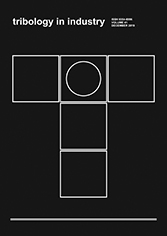Volume 44, No 1, 2022, Pages 150-168
A Review of Mixed Lubrication Modelling and Simulation
Authors:
Ruchita Patel ![]() ,
Zulfiqar Ahmad Khan
,
Zulfiqar Ahmad Khan ![]()
![]() ,
Adil Saeed
,
Adil Saeed ![]() ,
Vasilios Bakolas
,
Vasilios Bakolas ![]()
DOI: 10.24874/ti.1186.09.21.11
Received: 14 September 2021
Revised: 18 October 2021
Accepted: 10 November 2021
Published: 15 March 2022
Abstract:
Majority of the rolling contacts applied in complex interacting machine elements for example bearings and gears perform under Mixed Lubricating (ML) conditions, where the lubricant film can’t fully separate the asperities of the two contacting surfaces. Highly loaded, interacting asperity surrounded with lubricant film, leads to the development of surface originated defects such as scuffing, micropitting, and wear in the ML region. This region exists amid Elastohydrodynamic Lubrication and Boundary Lubrication which needs consolidated knowledge of fluid film and direct contact of asperities, this makes the problem more difficult to solve numerically. Numerous authors have used the Reynolds equation or its modified versions to solve the lubrication problem numerically. However, still, some uncertainty is there to model mixed lubrication operating conditions, with traditional Reynold’s equation, because the assumptions commonly made in Elastohydrodynamic lubrication are not valid within the context of mixed lubrication regime. In this paper previously, used models for mixed lubrication have been examined, and various development in related fields are discussed. Therefore, this review will provide an integrated, synthesized overview of the topic and in turn will lead to benefits for wide-ranging academic, industrial and research communities.
Keywords:
Rolling contact, Mixed Lubrication, Lubrication Modelling, Simulation





